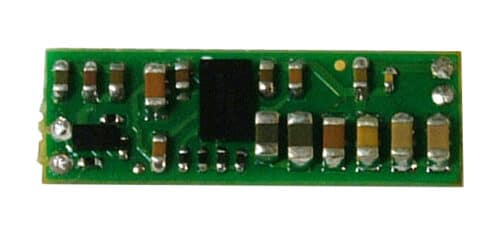A compact wireless charger design that follows Wireless Power Consortium (WPC) standard for establishing wireless communication and holds Qi certification.

Wireless chargers provide the convenience of charging devices without needing physical connectors or cables. They offer a clutter-free charging experience, allowing users to place their devices on a charging pad or stand simply. This technology eliminates the hassle of tangled cords and enables more seamless and efficient charging. To simplify the design process Texas Instruments (TI) has launched a reference design of a wireless charger for low-power wearable applications that follow Wireless Power Consortium (WPC) standards for establishing wireless communication and is Qi Certified. The design is optimized for low-power wearable devices requiring a Qi-compliant wireless receiver and an ultra-low current 1-cell Li-ion linear charger.
The reference design excels at handling charging currents as low as 10 mA and as high as 250 mA, accommodating termination currents as low as 1 mA. The wireless charger’s design is compact and specifically tailored for applications requiring a charge current of 135 mA. The design utilizes the bq51003 low-power wireless receiver and the bq25100 linear charger as its core components. The wireless receiver consists of rectification, voltage conditioning, and controller blocks that work together to facilitate efficient wireless charging. Combining the wireless receiver or charger design with a wireless transmitter Integrated Circuit (IC) makes creating a complete charging solution effortless.
The lithium-ion linear charger cell has a maximum battery charge current of 250 mA, providing ample capacity to charge nearly all wearable devices available today within a two-hour timeframe. Given the constraint of limited battery capacity, every milliampere-hour (mAh) becomes crucial for maximizing the device’s runtime. The lithium-ion linear charger cell excels in accurate programming and controlling the termination current, setting a new industry standard that can go as low as 1 mA. To optimize the effective battery capacity, it is equally important to minimize unnecessary power consumption. The linear charger demonstrates exceptional performance in this regard. It boasts a maximum battery leakage current specification of 75 nA, spanning temperatures from 0°C to 125°C. To put this into perspective, it would take approximately 152.2 years for a 100 mAh battery to discharge at this current. In reality, the current is negligible, as the self-discharge rate of the battery cell far exceeds it.
This reference design has been tested by TI. It comes with a Bill of Material (BOM), schematics, Gerber file, Printed circuit board (PCB) layout, computer-aided design/ computer-aided engineering (CAD/CAE) symbols, Assembly drawing, etc. You can find additional data about the reference design on the company’s website. To read more about this reference design, click here.






